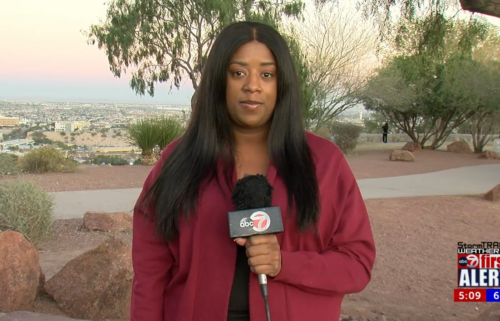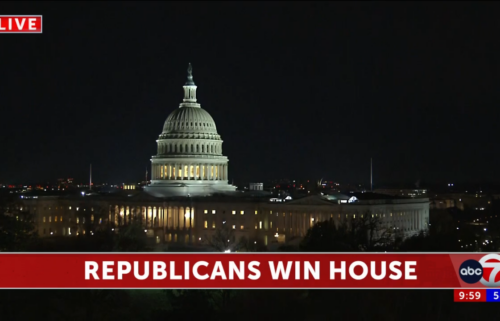Fact checking Trump’s falsehood-filled Supreme Court brief
President Donald Trump filed a brief at the Supreme Court on Wednesday that featured some of the same false and misleading claims Trump has been making on Twitter.
The brief asks the Supreme Court to allow Trump to intervene in support of a lawsuit filed by Texas Attorney General Ken Paxton. Republican attorneys general of 18 other states are supporting Texas as well. They are asking the court to invalidate the election results in Georgia, Michigan, Wisconsin and Pennsylvania, all of which were won by President-elect Joe Biden.
The lawyer who filed the Trump brief, John Eastman, made a series of inaccurate claims in arguing the President’s position. Here’s a breakdown of some of them.
Florida and Ohio
The brief says, “President Trump prevailed on nearly every historical indicia of success in presidential elections. For example, he won both Florida and Ohio; no candidate in history—Republican or Democrat—has ever lost the election after winning both States.”
Facts First: This is false. Richard Nixon lost the 1960 presidential election to John F. Kennedy even though Nixon won Florida and Ohio.
Also, it would merely be an interesting fact, not evidence of fraud, if Trump was indeed the first candidate to lose an election while carrying Ohio and Florida. Different candidates build different geographic coalitions.
Absentee ballot applications in Michigan
The brief says, “In Michigan, the Secretary of State illegally flooded the state with absentee ballot applications mailed to every registered voter despite the fact that state law strictly limits the ballot application process.”
Facts First: The Supreme Court has the final say on what is legal and not, but there is no apparent basis for the claim that Michigan Secretary of State Jocelyn Benson broke the law by sending out absentee ballot applications to every registered voter (in jurisdictions that were not themselves sending out applications to every registered voter). The application was available online to be printed out by anyone; even Michigan residents were allowed to mail applications to other residents.
When Trump was asked by reporters in May to explain what he thought was illegal about what Michigan did, he did not offer a specific answer. Nor did White House press secretary Kayleigh McEnany when she was asked in May.
Pennsylvania and signatures
The brief alleged that “Pennsylvania’s Secretary of State issued guidance purporting to suspend the signature verification requirements, in direct violation of state law.”
Facts First: Again, we defer to the Supreme Court on what is legal — but it’s worth noting that both a unanimous Pennsylvania Supreme Court and a Trump-appointed federal judge both ruled that the signature guidance from Secretary of the Commonwealth Kathy Boockvar was legal. Both found that nothing in state law requires counties to check whether voters’ signatures on ballot envelopes match the signatures on file.
Pennsylvania’s Supreme Court ruled unanimously in October to uphold the Boockvar guidance. “We decline to read a signature comparison requirement into the plain and unambiguous language of the Election Code,” the court said in the decision, in which the judges forbade counties from rejecting mail-in ballots because of non-matching signatures.
Similarly, federal District Court Judge J. Nicholas Ranjan, who was appointed by Trump, ruled in October: “After carefully considering the parties’ arguments and the relevant law, the Court finds that the plain language of the Election Code imposes no requirement for signature comparison for mail-in and absentee ballots and applications. In other words, the Secretary’s guidance is consistent with the Election Code, and creates no vote-dilution problems.”
Drop boxes in Wisconsin
The brief claimed that “in Wisconsin, the largest cities all deployed hundreds of unmanned, unsecured absentee ballot drop boxes that were all invalid means of returning absentee votes under state law.”
Facts First: We’ll again leave the question of legality to the courts, but it’s not true that the drop boxes in Wisconsin’s big cities were “unsecured.” The drop boxes were secured in various ways — such as being anchored to the ground, sealed against tampering, and subjected to 24-hour video surveillance, as per guidance from the state elections commission.
Drop boxes and parking lots
The brief does not provide evidence of any mass fraud. Instead, it claims that the policies of Georgia, Michigan, Wisconsin and Pennsylvania created a greater prospect of fraud. As an example, it said that “leaving ballot boxes in public parking lots invites fraud.”
Facts First: This is baseless. Official ballot drop boxes around the country are specifically designed and set up to securely receive ballots without tampering, theft, or other kinds of fraud — they are designed with anti-tampering measures, affixed to the ground, made with durable materials, and often monitored by video surveillance — and there is no evidence that the boxes were used for fraudulent purposes in the 2020 presidential election.
“Although there was much debate over the use of drop boxes this past election for dropping off absentee ballots, I am unaware of any instances in which there has been any fraud found in the use of them during the past election,” said CNN election law analyst Rick Hasen, a law professor at the University of California, Irvine.
Wendy Weiser, the director of the Democracy Program at the Brennan Center, told CNN in August that drop boxes don’t “introduce some kind of uniquely difficult security problems,” adding that election administrators follow the same security practices they employ in collecting all other ballots.
Poll watchers
To imply that the US presidential election was unfair, the brief invoked an August statement in which Secretary of State Mike Pompeo criticized the presidential election in Belarus. The brief noted that Pompeo had cited the “prohibition of local independent observers at polling stations” as a factor demonstrating that the election there was “not free and fair.”
Facts First: This is misleading. Regardless of what happened in Belarus, there is no evidence that independent observers were systematically prohibited at US polling stations.
Since Election Day, Trump has falsely claimed on several occasions that Republican poll watchers in particular were banned from counting locations or otherwise prevented from observing the count and denied the access they legally deserved. But Trump claim after Trump claim has been debunked; where Democratic observers were permitted, Republicans observers were permitted as well.
You can read more about what happened with poll watchers in key swing states here.
Bellwether counties
The brief says of Trump: “He won 18 of the country’s 19 so-called ‘bellwether’ counties—counties whose vote, historically, almost always goes for the candidate who wins the election.”
Facts First: This is true — Trump won 18 of the 19 counties that had voted for the president in every election from 1980 through 2016, according to the Wall Street Journal — but irrelevant to the claim that the election was tainted. As demographics and political preferences change, bellwether areas can cease to be bellwether areas for all sorts of entirely benign reasons.




